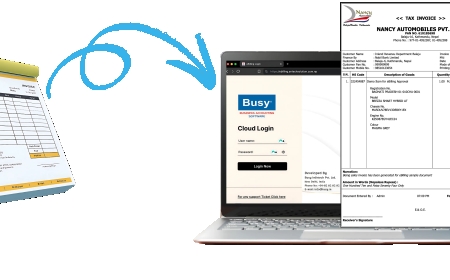How to Learn Fluent English Without Fear or Hesitation
Want to speak English confidently? Learn how to overcome fear and hesitation with practical tips that help you build fluency, boost self-confidence, and speak naturally in real-life situations. Many learners struggle with fear and hesitation while speaking English, even if they know the basics. This blog reveals proven strategies to help you speak English fluently and confidently. From daily speaking practice and vocabulary building to mindset shifts and real-life exposure, you’ll discover how to break the fear barrier and communicate with ease in any setting.

Introduction
Learning fluent English is not just about memorizing vocabulary or mastering grammar rulesits about speaking with confidence, clarity, and ease. Yet for many learners, the biggest obstacle isnt language itselfit's fear and hesitation. Fear of making mistakes, fear of being judged, and fear of not being understood often prevent learners from speaking up. The good news is: you can overcome this fear.Heres how you can start your journey today.
1. Accept That Mistakes Are Part of Learning
Fear often stems from the idea that we must speak perfectly. Even native speakers make grammar errors or forget words. The more mistakes you make, the more you learn.
Tip: Dont stop yourself mid-sentence. Keep speakingeven if its not perfect.
2. Speak Every Day, Even If Its Just to Yourself
Fluency is built through regular, active speaking. If you dont have someone to talk to, practice solo.
How to do it:
-
Describe your day in English
-
Record your voice and listen to it
Speaking out loud regularly removes hesitation and builds fluency.
3. Start with Simple Sentences
Don't pressure yourself to use complex words or perfect grammar. Begin with short, easy sentences youre comfortable with.
Example:
-
I am going to the market.
-
It is cold today.
-
I watched a movie last night.
As you gain confidence, naturally move to longer and more expressive sentences.
4. Think in English
If youre constantly translating in your head from your native language to English, hesitation will follow.
Practice like this:
-
While walking: The road is busy.
-
During meals: I like this food. Its spicy.
-
Set reminders to label your thoughts in English
The more you do it, the more natural it becomes.
5. Use Shadowing Technique
Shadowing means listening to a sentence in English and repeating it immediatelycopying the speakers tone, pace, and pronunciation.
What to shadow:
-
TED Talks
-
English interviews
-
Audiobooks or podcasts
This method helps you sound more fluent and native-like over time.
6. Learn Useful Phrases, Not Just Words
Learning vocabulary is helpful, but memorizing common phrases is more practical in real conversations.
Examples:
-
What do you do for fun?
-
Thats a great idea.
-
Let me think about it.
Phrases make your speech smoother and more natural.
7. Join Speaking Groups or Language Exchange Apps
To overcome fear, speak with real people. Join a group or use free apps like:
-
Tandem
-
HelloTalk
-
Speaky
Practicing with strangers (or friends) online builds your real-world communication confidence.
8. Use Positive Self-Talk
Fear often comes from negative thoughts like Im not good enough or Ill embarrass myself.
Instead, tell yourself:
-
Its okay to make mistakes.
-
Im learning and improving every day.
-
Fluency comes with practice, not perfection.
Confidence begins in your mindset.
9. Focus on Clarity, Not Speed
You dont have to speak fast to be fluent. In fact, many fluent speakers talk slowlybut clearly.
Tips:
-
Pause to think
-
Speak at your own pace
-
Use body language to support your words
Clear communication is more valuable than fast speech.
10. Celebrate Progress, Not Just Perfection
Every time you speak a full sentence, join a conversation, or understand a new phraseyouve improved. Celebrate these wins. Progress builds motivation, and motivation reduces fear.
Conclusion
Fluent English speaking course in chandigarh sector-34 is not about perfectionits aboutcommunication, confidence, and consistency. When you speak every day, embrace mistakes, think in English, and practice with others, your fear starts to fade and your fluency grows. So start small. Speak today. Speak tomorrow. And slowly, without even realizing it, youll speak fluentlywithout fear or hesitation.
Q1: Why do I feel nervous while speaking English, even if I know the words?
A1: Fear comes from self-doubt and fear of making mistakes. Confidence grows through regular speaking practice and embracing small errors as part of the learning process.
Q2: Whats the best way to start speaking English without hesitation?
A2: Start with simple conversations daily. Speak with friends, practice in front of a mirror, or record yourself to get comfortable with forming sentences naturally.
Q3: How can I improve my fluency without taking a formal class?
A3: Watch English shows with subtitles, read aloud daily, shadow native speakers, and join free language exchange apps to practice with real people.
Q4: How do I stop translating from my native language when speaking English?
A4: Think in English by practicing with common phrases and building vocabulary through context. Gradually, your brain will learn to form sentences directly in English.
Q5: Can hesitation be reduced by improving vocabulary?
A5: Yes, a strong vocabulary helps you express thoughts clearly and confidently. Learn 510 new words daily and use them in your conversations immediately.
Q6: How long does it take to speak English fluently without fear?
A6: It varies per person, but with consistent practice (3060 minutes daily), most learners see significant improvement in 3 to 6 months.
































